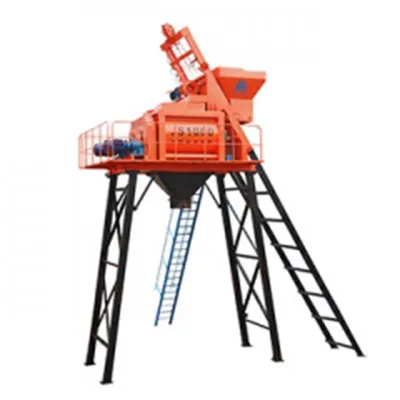
- Afrikaans
- Arabic
- Belarusian
- Bengali
- Czech
- Danish
- Dutch
- English
- Esperanto
- Estonian
- Finnish
- French
- German
- Greek
- Hindi
- Hungarian
- Icelandic
- Indonesian
- irish
- Italian
- Japanese
- kazakh
- Rwandese
- Korean
- Kyrgyz
- Lao
- Latin
- Latvian
- Malay
- Mongolian
- Myanmar
- Norwegian
- Persian
- Polish
- Portuguese
- Romanian
- Russian
- Serbian
- Spanish
- Swedish
- Tagalog
- Tajik
- Thai
- Turkish
- Turkmen
- Ukrainian
- Urdu
- Uighur
- Uzbek
- Vietnamese
artificial grass for sports
Nov . 13, 2024 11:05 Back to list
Artificial Grass for Sports Revolutionizing Athletic Fields
In recent years, the world of sports has undergone significant transformations, thanks in part to advancements in technology. One such innovation that stands out is artificial grass, also known as synthetic turf. While natural grass has long been the traditional surface for athletic fields, artificial grass has emerged as a viable alternative, offering numerous benefits that cater to the needs of athletes, coaches, and facility managers alike.
Durability and Maintenance
One of the most compelling advantages of artificial grass is its durability. Unlike natural grass, which can suffer from wear and tear due to heavy foot traffic, adverse weather conditions, and seasonal changes, synthetic turf is designed to withstand constant use without showing significant signs of damage. This durability extends the lifespan of athletic fields, allowing sports complexes to host more events and activities without the need for frequent repairs or re-seeding.
Moreover, maintaining artificial grass is far less labor-intensive than managing a natural grass field. Mowing, watering, fertilizing, and pest control are all eliminated, reducing both the time and cost associated with upkeep. Facility managers can redirect these resources toward enhancing other areas, such as improving training programs or upgrading equipment, ultimately benefiting the athletes who use the facilities.
Consistent Playing Conditions
Another noteworthy benefit of artificial grass is the consistency it offers in playing conditions. Synthetic turf is engineered to provide a uniform surface, ensuring that athletes can perform at their best regardless of the weather. Rainfall does not hinder play, as artificial grass drains quickly, preventing muddy conditions that can lead to injuries. This reliability not only boosts athlete performance but also enhances safety, as uneven or slippery surfaces often contribute to accidents and injuries.
Additionally, many artificial grass products are designed to replicate the look and feel of natural grass, providing athletes with a familiar experience while ensuring top performance standards. This is particularly important for sports like soccer, football, and rugby, where traction and ball bounce are critical for effective play.
artificial grass for sports

Environmental Considerations
Despite concerns over the sustainability of synthetic materials, many artificial grass manufacturers have taken significant strides toward creating eco-friendly products. Modern turf systems are increasingly made from recycled materials and designed for longer lifespans, which reduces waste. Furthermore, artificial grass eliminates the need for water, pesticides, and fertilizers—resources that can be detrimental to the environment when used excessively.
By opting for synthetic turf, sports facilities can significantly reduce their water consumption—an increasingly vital factor in many regions facing drought conditions. As water restrictions become more common, the role of artificial grass in maintaining green and playable fields cannot be overstated.
Versatility and Multi-Use Applications
Artificial grass is not only suitable for outdoor sports fields; it has gained traction for various indoor applications as well. Gyms, training centers, and recreational facilities are increasingly incorporating synthetic turf into their designs. This versatility makes it an attractive choice for schools, community centers, and professional sports teams looking to maximize the usability of their spaces.
In addition, synthetic turf can accommodate a range of sports, from soccer to field hockey and even golf putting greens. The ability to tailor the design of artificial grass fields to meet specific sport requirements further enhances its appeal among athletic organizations.
Conclusion
Artificial grass is rapidly changing the landscape of sports facilities, offering a multitude of benefits that align with contemporary demands for sustainability, durability, and versatility. As technology continues to advance, we can expect to see further improvements in the quality and performance of synthetic turf materials. Athletes, coaches, and facility managers can embrace this innovative solution, confident that artificial grass will provide a reliable, safe, and effective playing surface that meets the needs of modern sports. The future of athletic fields is undeniably bright, with artificial grass leading the way in redefining how we play.
-
The Benefits of Artificial Turf for Indoors
NewsJul.15,2025
-
How Artificial Grass Suppliers Ensure Quality Products
NewsJul.15,2025
-
Artificial Grass and Pets: A Space for Relaxation
NewsJul.08,2025
-
Balcony & Outdoor Decoration with Artificial Grass
NewsJul.08,2025
-
Best Indoor Artificial Grass for Home
NewsJul.07,2025
-
Best Pet Turf for Dogs: Safe & Durable Artificial Grass Options
NewsJul.07,2025
Products categories









